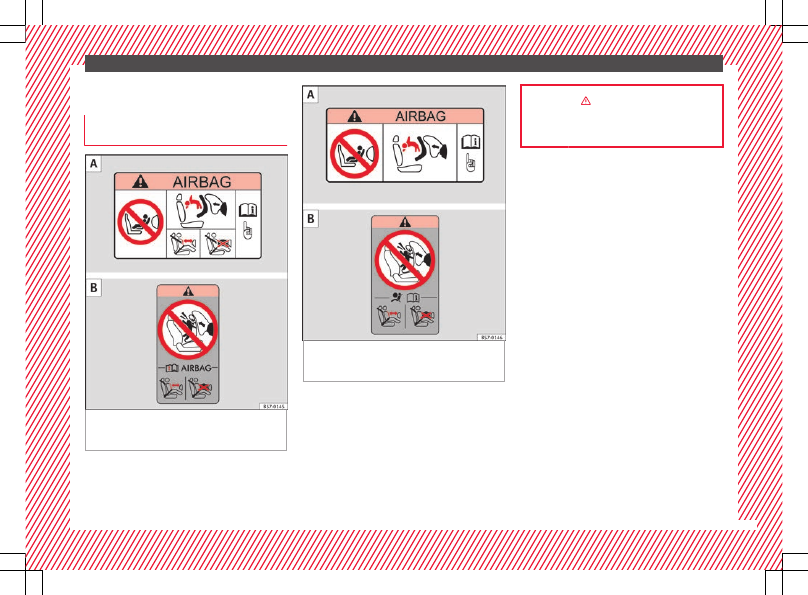Seat Alhambra. Instruction - part 2
-------------------------------------------------------------------------------------------------------------------------------------------------------------

The essentials
Child seats
Important information regarding the
front passenger's airbag
Fig. 34
Airbag stickers - version 1: on the
front passenger's sun visor and on the rear
frame of the front passenger's door .
Fig. 35
Airbag stickers - version 2: on the
front passenger's sun visor and on the rear
frame of the front passenger's door .
A sticker with important information about
the passenger airbag is located on the pas-
senger's sun visor and/or on the passenger
side door frame.
21